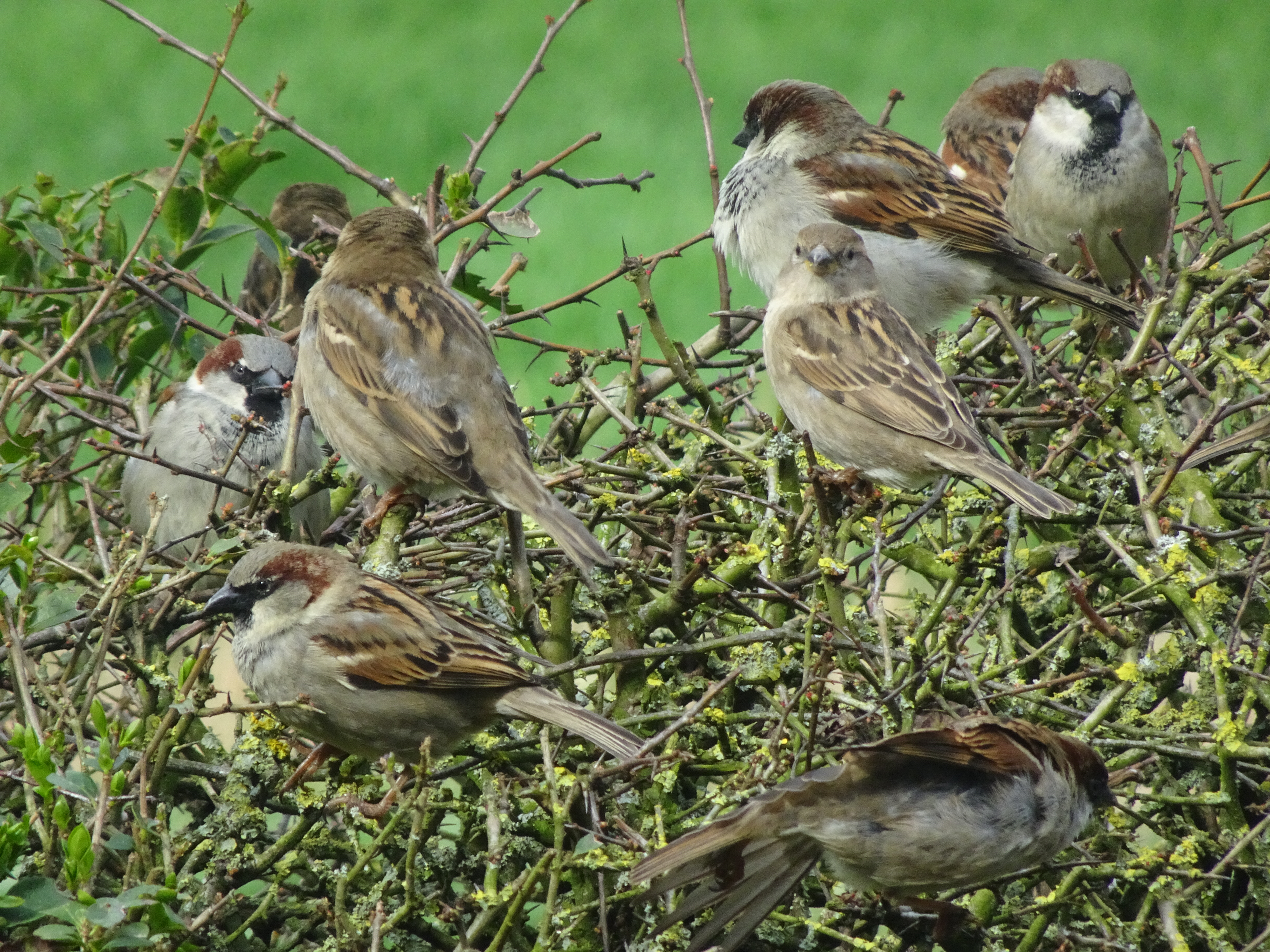One of the most familiar sounds on Owl Acres any time of the year is the scolding of house sparrows. They seem to have a lot to say even when it’s really cold out. We hear them as Dave, Clancy and I head off for our morning walk. In the spring and summer, their noisy chatter will fill the soundscape.
House sparrows, (Passer domesticus) AKA English sparrows, are native to Europe and Asia. They were introduced to North America in 1851 by the same Shakespeare enthusiasts who introduced the starling and the rock dove. They released house sparrows in Brooklyn, New York, and by 1900 these sturdy, adaptable birds had spread to the Rockies. Additional introductions in Salt Lake City and San Francisco in the 1870s guaranteed their presence across the continent. Today they are everywhere except perhaps Alaska. They have also been introduced to Australia and New Zealand and have colonized Central and South America as well.
Male house sparrows have a gray cap, chestnut-colored wings with white wing bars. They have a black bib on their chests. The bib is thought to get larger as the bird ages and signifies social status. Females are also thought to be more attracted to males with large black bibs. The females and young birds are all a streaky brown with lighter coloration on the underside. Adults have a wingspan of 8 to 10 inches. They measure around 6 inches head to tail and weigh a bit over an ounce. They are heavier than native sparrows and have a shorter tail and larger, more rounded head than their native cousins. House sparrows have short sturdy cone-shaped bills suited for cracking seeds and pursuing a varied diet that includes some insects, seeds, grain, and sometimes nectar. House sparrows have been known to harvest smashed insects from windshields, but most of the time they hop around on the ground to find live ones.
Flocks of house sparrows are common, and within the flock, a hierarchy exists that is similar to the pecking order of chickens. They may build their nests close together in groups as well, and only defend the territory adjacent to their nests.
House sparrows, as their name implies, prefer to live around houses and people. They thrive around the house and shed on Owl Acres and in most cities and suburbs. They are aggressive and often chase away or kill native songbirds to take over their nest sites or the bird feeder.
After a courting period in early spring where the male puffs out his chest, drops his wings and raises his tail, chirping and hopping around the female, a pair will mate and stay together for the year. After mating, the female lays from two to five eggs in a nest they built of grass, weeds, twigs and trash and lined with softer materials such as feathers. They like to build their nests in manmade structures such as houses and barns, but will settle for holes in trees when necessary. Both parents share incubation and nestling-feeding responsibilities and may raise two or three broods in a year.
In their native England, house sparrows are declining in number as much as 66% between 1977 and 2015, with as much as a 71% decrease in population in the city of London over the past 30 years. In the United States, the eastern population of house sparrows peaked around 1900 and has been in gradual decline since then. According to the North American Breeding Bird Survey, they have declined about 3 percent per year since the 1960s or about 80% in the past 60 years. The reasons for this decline are not fully understood.
House sparrows don’t migrate, so they’re spending the winter with us, enjoying the rich harvest of weed seeds from the foxtail and ragweed, as well as frequenting the bird feeder.
Photo from Wikimedia.org by: Pieter Delicaat Alt text: A flock of fat birds of both sexes sits amid the dense foliage of a prickly hedge. House Sparrow.
